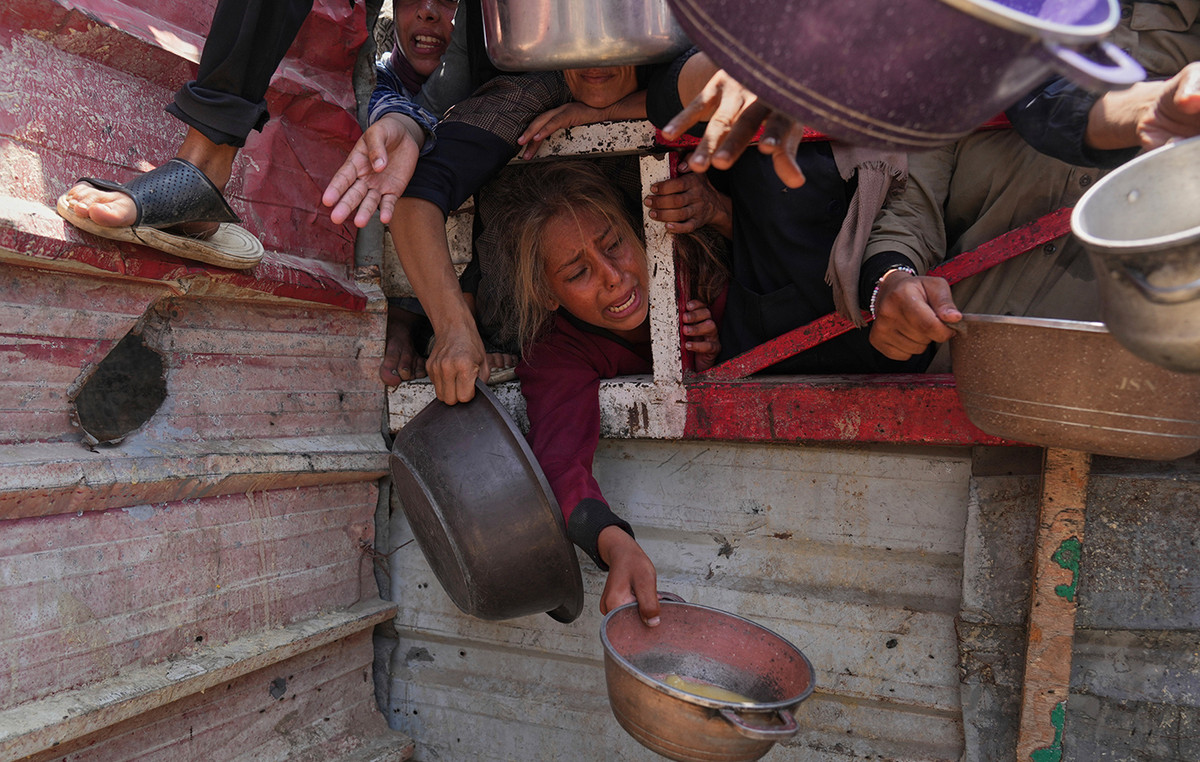In the first nine months of the year, the state of São Paulo recorded 166 cases of feminicide, according to data from the São Paulo Public Security Secretariat (SSP).
This was the highest number of cases since 2018, when the classification began to appear in police reports. It also represents an increase of 25.7% compared to the same period last year, which had 132 femicides.
Number of femicides in SP between January and September:
- 2018: 95
- 2019: 122
- 2020: 123
- 2021: 107
- 2022: 132
- 2023: 166
Numbers could be higher
However, the reality may be even greater in cases of rape and feminicide. According to a study carried out by the Institute of Applied Economic Research (Ipea), released in March this year, only 8.5% of crimes are recorded by the police.
Femicides may suffer from underreporting, as the classification of the death – the crime of intentional homicide, when there is an intention to kill – depends on the police officers in charge of the case, according to Isabela Sobral, supervisor of the Data Center at the Brazilian Public Security Forum.
Femicide is a specific type of intentional homicide, created in 2015 based on a specific law to identify where the crime occurs due to the victim being a woman or in the context of domestic violence. It is up to the police authority to identify that the case is a specific feminicide and not a common intentional homicide – that is, to identify that the crime is related to the victim’s gender, and this often does not happen in practice.
Isabela Sobral
The registration of a woman’s death as a feminicide is done when the police report is filed. Based on the bulletins, the SSP separates and publishes data on violence against women in the state.
In September of this year alone, 24 cases of femicide were recorded. It is the highest data for the month since 2018, when the distinction of “feminicide” began to be distinguished in SSP data. In 2022, 13 cases were recorded in the same month.
Training
To change the way crimes are recorded, in Sobral’s opinion, there needs to be training on the part of the police so that agents are able to identify crimes such as feminicide, in addition to cases that occur within the context of domestic violence.
As stated in the study carried out by Ipea, the researcher explains that rape is a crime that is typically very underreported. According to Sobral, victims are often afraid or ashamed to seek out the authorities to register the crime, in addition to cases in which they are unable to identify the violence they suffered as rape due to vulnerability reasons.
“We have to look very carefully at this increase because these numbers would probably be even higher if we were to look at the reality of rape,” says Sobral, “because probably [esses números] are very underreported.”
Rapes also increased
In addition to the increase in official statistics on femicide cases, an increase in rape cases was also recorded in 2023. From January to September, 2,105 cases were recorded. In 2022, in the same period, there were 2,013.
2023 recorded the highest accumulation for the first nine months of the year since 2019, when 2,278 occurrences were recorded in the period.
Even among the official numbers – these in a context of reality amid underreporting, the data on rape of vulnerable people is alarming. According to SSP data, in the same period in which 2,105 cases of rape were recorded in 2023, 6,874 incidents of rape of vulnerable people were recorded.
According to Sobral, there are, in fact, more cases among the vulnerable public, but not necessarily the same underreporting, as some factors that apply to one group do not apply to another. “The majority of registered cases are against vulnerable victims, who are people under 14 years of age or who were unable to consent at the time of the act, and it is not possible to say with certainty whether there is greater underreporting of cases among adult women or adults” , he explains, saying that there is a greater proportion of vulnerable people than non-vulnerable people.
The majority of victims are adult women, and there is a greater fear of reprisals and a greater possibility of being embarrassed to report it. That case of feeling guilty or being afraid of being reused at the police station. This can lead to women not going to the police after being raped.
Isabela Sobral
In the case of vulnerable people, such as children who attend school, the school environment and teachers become important elements in identifying when the child may be the target of this crime. “In the case of children, there are often more people paying attention to these situations”, he explains.
This does not mean, however, that these cases are also exempt from underreporting. In the case of children and adolescents, the crime may be committed by a family member. “It has a relationship with authority, a relationship with greater difficulty in recognizing what the child is going through”, says Sobral, explaining that, therefore, these cases may have greater notification than those against adults.
Source: CNN Brasil
I’m James Harper, a highly experienced and accomplished news writer for World Stock Market. I have been writing in the Politics section of the website for over five years, providing readers with up-to-date and insightful information about current events in politics. My work is widely read and respected by many industry professionals as well as laymen.







